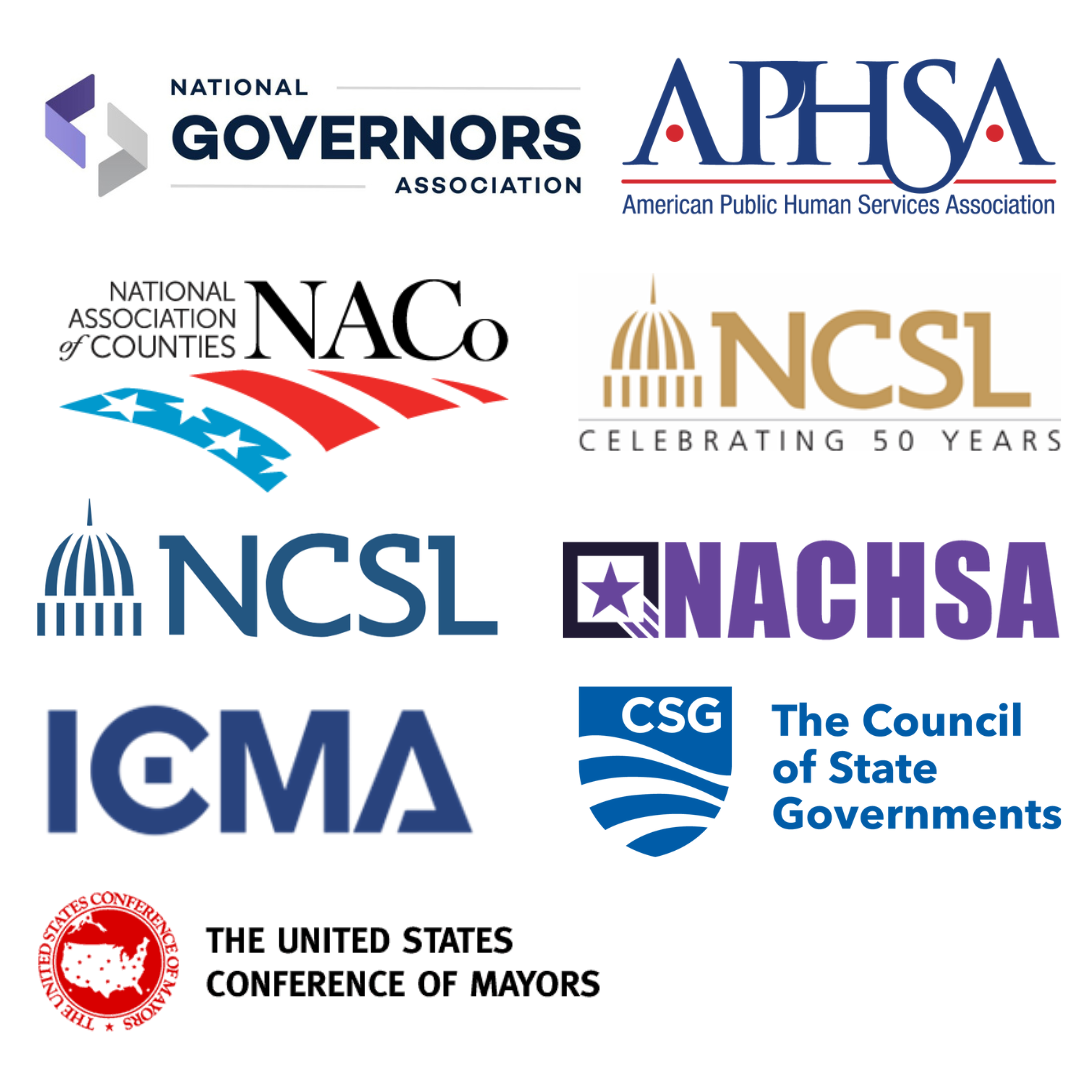Rural communities are foundational to the nation’s health and economy. With nearly 60 million people living in rural America, these communities help sustain America’s food systems, safeguard energy grids and anchor regional economies. Yet rural communities face unique challenges including disparate rates of chronic disease, fragile health systems, fewer resources, workforce shortages, aging infrastructure, gaps in primary and behavioral health care and limited broadband access.
Rural areas continue to experience the effects of changing economic conditions, uneven access to opportunity, and gaps in employment and income compared with metropolitan areas. Governors are uniquely positioned to lead and support responses that recognize local strengths, close persistent gaps, and encourage communities to be their own champions and guide their own development strategies.
By setting policy directions to mobilize resources and convening stakeholders across sectors, Governors can advance sustainable and innovative rural health solutions. This commentary spotlights the CMS Rural Health Transformation Program (RHTP), shares emerging state responses, identifies key stakeholder partners, and explores critical policy areas related to rural health, ranging from behavioral health and maternal and child health to workforce development and economic growth.
Rural America: A Public Health and Economic Asset

Rural communities contribute to national success in ways that are often overlooked. They produce food that sustains households, generate energy that powers industry, and support industries such as manufacturing and tourism. As a result, safeguarding the health and well-being of rural populations is therefore not just a local concern, but a national one.
Recognizing rural America as both an economic and public health asset means Governors may wish to prioritize effective rural health policy as part of their broader growth and resilience agenda. A healthy community is a vibrant community – one where residents can participate in the workforce, businesses can recruit talent, schools are well supported and main streets remain vibrant. Moreover, studies show that poor health outcomes in rural areas are closely tied to reduced workforce participation and weaker local economies.
Many Governors are already taking action.
- In Virginia, Governor Glenn Youngkin issued an executive directive launching a statewide Rural Health Transformation initiative and stakeholder outreach plan to position the state to receive up to $1 billion in federal RHTP funding over five years.
- Maryland Governor Wes Moore launched Rural Advancement for Maryland Peers, a $1.6 million grant program to help Marylanders in rural communities access support to address substance use.
- Former West Virginia Governor Jim Justice unveiled a $40 million Rural Hospital Grant Program to support critical upgrades for rural hospitals, such as cancer centers, behavioral health clinics and expanded diagnostic services.
- Governor Matt Meyer of Delaware is soliciting ideas and priorities from community stakeholders to inform the state’s transformation plan.
- Colorado Governor Jared Polis has highlighted broadband expansion as critical for telehealth and entrepreneurship alike, underscoring that healthcare infrastructure and economic resilience go hand in hand.
- In Iowa, Governor Kim Reynolds awarded more than $470,000 in grants to rural communities through the Empower Rural Iowa Grant program.
- Illinois Governor JB Pritzker has implemented programs to improve mental health access for farmers and rural communities in Illinois.
Considerations for Governors: Framing rural health investments as driving job creation, fostering entrepreneurship, and strengthening communities can help ensure this effort becomes a bipartisan priority for every state.
The Rural Health Transformation Fund
The CMS Rural Health Transformation Program, (RHTP) established by H.R. 1, creates a five-year, $50 billion program to support rural health nationally. Half of these funds will be distributed equally to states, while the other half is allocated competitively based on rural population, facility need and other CMS-defined metrics.
Governors are critical to aligning this new federal funding with broader state strategies, shaping applications through coordinated, interagency efforts and broad stakeholder engagement.
This new program gives states an opportunity to pilot payment reforms, expand maternal and behavioral health access, invest in cybersecurity and telehealth infrastructure, and build long-term workforce systems.
Consideration for Governors: Linking applications for this program to statewide economic development strategies may strengthen the outcomes that result from using these funds while also ensuring rural communities benefit from long-term, integrated investments.
Engaging Key Stakeholders
Building effective rural health transformation strategies depends on collaboration. Governors may consider convening members from partners such as:
- Association of State and Territorial Health Officials (ASTHO)
- Federally Qualified Health Centers (FQHCs)
- National Association of Counties (NACo)
- National Association of Medicaid Directors (NAMD)
- National Conference of State Legislatures (NCSL)
- National Organization of State Offices of Rural Health (NOSORH)
- National Rural Health Association (NRHA)
Local stakeholders, rural hospitals, community colleges, workforce boards, chambers of commerce and public health agencies can play an essential role in helping design grounded, effective solutions.
Consideration for Governors: Including business and workforce leaders alongside health providers in rural health planning can strengthen the alignment between health outcomes and economic opportunity.
Key Policy Areas for Governors
To harness rural health potential more fully, Governors can weigh cross-cutting areas such as:
- Healthcare Access and Affordability: Expanding access to affordable healthcare remains a cornerstone for rural prosperity. Strengthening rural hospitals, supporting community health centers and expanding telehealth networks help ensure residents can receive timely care close to home.
- Maternal Health: Addressing maternal health is also critical. Governors may consider programs that expand perinatal services, midwife and doula services, improve rural birthing center access, and reduce maternal mortality rates, which remain disproportionately high in many rural areas.
- Integration of Behavioral Health Services within Primary Care: Integration of behavioral health into primary care settings offers another path forward. By embedding behavioral health services where patients already receive care, states can provide a more holistic treatment, reduce stigma, and better respond to rising mental health needs.
- Education and Workforce Development: Education and workforce development remain long-term levers for rural vitality. Investments in early childhood education, higher education and workforce training programs can help communities cultivate the next generation of healthcare providers and strengthen local economies.
- Economic Development: Economic development strategies that support small businesses, attract new industries and promote entrepreneurship can reinforce rural stability. Framing healthcare not just as a service, but as an economic sector and employer, can further integrate health investments with statewide growth strategies.
- Outdated Infrastructure: Many facilities rely on legacy systems and would benefit from investing in infrastructure projects, such as rural healthcare cybersecurity, transportation, rural emergency medical services, broadband access, and energy initiatives.
Consideration for Governors: Addressing these areas through an integrated strategy can help position rural communities not just as recipients of aid, but as engines of state growth and innovation.
NGA’s Role in Supporting Governors
The NGA Center for Best Practices supports data-informed, consensus-driven and scalable solutions. The NGA Center continues to stand at the ready to support Governors through tailored technical assistance, such as:
- Multi-state learning networks on rural health financing, telehealth and workforce strategies.
- Policy advising to align federal funding, including RHTP with state health and economic goals.
- Tools to connect rural health with education, infrastructure and economic development strategies.
- Case studies and briefs sharing best practices from gubernatorial actions across the country.
Rural America is a national asset that can be further empowered through this initiative. With the CMS Rural Health Transformation Program, Governors have a rare opportunity to shape health, economic resilience and community vitality in rural areas. By engaging stakeholders and addressing systemic barriers, Governors can ensure rural communities remain integral to the nation’s health and future.
State Health and Value Strategies has created a resource summarizing how states are preparing for the Rural Health Transformation Program, including a map highlighting state actions to date. This resource is available here.
For more information about NGA’s Rural Health Transformation Program technical assistance, please contact Brittney Roy-Morales.
Related Content:












